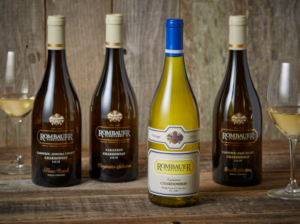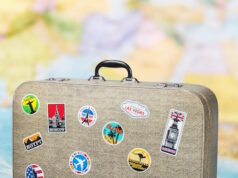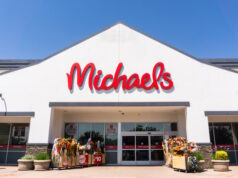
We’re stunned by the number of friends in our group who wouldn’t be caught dead ordering chardonnay, a maligned quaff too often associated with morning television hosts and soccer moms. Still, it remains the top-selling white wine in the United States. Someone is drinking it — a lot of it.
 Chardonnay is initally more neutral in flavor that most white wines. Once harvested and crushed, chardonnay is like an empty canvass waiting for the winemaker’s creative strokes. Alas, sometimes those strokes are the work of surrealists. While Burgundy set the bar for great, elegant chardonnay, producers in other regions have run amok by experimenting with yeasts, adding excessive oak and manipulating texture with something called malolactic fermentation. Taste a simple Macon Village or Chablis alongside an over-oaked California chardonnay and you’ll experience the difference. Wine-making surrealism.
Chardonnay is initally more neutral in flavor that most white wines. Once harvested and crushed, chardonnay is like an empty canvass waiting for the winemaker’s creative strokes. Alas, sometimes those strokes are the work of surrealists. While Burgundy set the bar for great, elegant chardonnay, producers in other regions have run amok by experimenting with yeasts, adding excessive oak and manipulating texture with something called malolactic fermentation. Taste a simple Macon Village or Chablis alongside an over-oaked California chardonnay and you’ll experience the difference. Wine-making surrealism.
At the risk of boring you with all this chemistry, it’s important to write about malolactic fermentation to explain why many chardonnays are unappealing. If you understand this, you’ll be able to identify the chardonnays that appeal to you.
Used frequently in nearly all red wines, malolactic fermentation is a process that makes acidic wine softer. Tart, mouth-puckering malic acids are converted to softer-tasting lactic  acid by adding a bacteria shortly after or during primary fermentation. The process is often called a secondary fermentation even though no yeasts are used. The result is a buttery flavor and sometimes hazelnut aromas. The degree of butter is determined by whether all of the chardonnay is exposed to MLF or just a part of it.
acid by adding a bacteria shortly after or during primary fermentation. The process is often called a secondary fermentation even though no yeasts are used. The result is a buttery flavor and sometimes hazelnut aromas. The degree of butter is determined by whether all of the chardonnay is exposed to MLF or just a part of it.
The only other element with as much of an influence to chardonnay’s flavor is oak, which adds a lot of secondary flavors such as coconut, vanilla and baking spices. Together, oak and MLF can make a neutral wine very opulent in comparison to the elegant, austere French burgundies.
Lest you think a winemaker is just playing around in the lab, there is often a good reason to use MLF. Chardonnay grapes grown in cooler climates, such as Chablis and the Sonoma Coast, have a lot of natural acidity and tend to be medium or light in body with apple and pear flavors. Winemakers elect to use MLF in order to preserve the fresh fruit and mineral qualities of their wines. However, many U.S. producers use MLF to tame high levels of acidity and to fatten up the chardonnay with a buttery texture.
 Chateau Montelena’s Napa Valley chardonnay is iconic and it has never used MLF. It’s 1973 chardonnay beat several expensive burgundies in a famous blind tasting called the Judgement in Paris
Chateau Montelena’s Napa Valley chardonnay is iconic and it has never used MLF. It’s 1973 chardonnay beat several expensive burgundies in a famous blind tasting called the Judgement in Paris
Matt Crafton, Chateau Montelena’s winemaker, said in an email that MLF is “not a color we need to paint with here.“ He would rather depend on the ripeness of the grapes to provide texture to his well-respected chardonnay.
“We let our vineyards and the unique character of the vintage drive how we make our wines…Over the past 40 years we’ve honed in on sites that are well suited for non-ML chardonnay,” he said.
Crafton admits that chardonnays that fully undergo MLF and barrel aging will outsell the Montelena style “1000 to 1.”
“Given the need for very specific growing conditions even in this tiny corner of the planet that is Napa Valley, our Chardonnay isn’t high-volume or scalable and we’re OK with that,” he said.

Quite the opposite is the popular and well-regarded Rombauer Carneros Chardonnay, an opulent and creamy style wine. It goes through 100 percent MLF and 100 percent oak aging.
Wines that use MLF and oak-aging aren’t necessarily bad. It’s impossible to deny their drinkability and success. But, an educated consumer can find the chardonnay that suits their palate if he or she knows what influences these practices bring to the wine. If you like your chardonnay lush, buttery and delicious, ask your sales staff for wines with malolactic fermentation.
Here are a few wines that demonstrate the range of styles:
-

Chateau Montelena Napa Valley Chardonnay 2016 Chateau Montelena Napa Valley Chardonnay 2016($58). Jasmine and citrus aromas are chased by fresh green apple flavors and hints of nutmeg and cinnamon. Stark minerality and balanced acidity make this a superb food wine. This chardonnay can age.
- Rombauer Vineyards Carneros Chardonnay 2018 ($38). Mango and peach notes with oak-inspired hints of vanilla and spice mingling with a creamy mouthfeel and classic butter that comes from MLF.
- Gary Farrell Olivet Lane Chardonnay 2016 ($45). We like this chardonnay because it has balance. The wine goes through 100 percent MLF, but the wine has good acidity because the grapes are picked at lower sugar levels. Lemon and apple aromas mingle with lemon cream and a dash of butter and toasted oak. Well balanced and soft mouthfeel.
-

Newton Chardonnay Unfiltered Napa Valley 2016 Newton Chardonnay Unfiltered Napa Valley 2016 ($55). A phenomenal chardonnay that undergoes MLF and full barrel fermentation, this chardonnay is a perennial favorite because it is unfiltered. Pineapple and peach elements with a hint of minerality. A complex tasting experience with a creamy elegant finish.
- Kendall-Jackson Avant Unoaked Chardonnay California 2018 ($13). This refreshing wine is cold fermented in stainless steel tanks to create a pure expression. Crisp green apple, citrus and tropical fruit notes. One of the best buys in unoaked chardonnay.
- Balletto Teresa’s Vineyard Unoaked Chardonnay 2017. ($20). This reasonably priced chadonnayfrom the Russian River Valley has vibrant and pure apple flavors.
- Macon-ChaintreFloreal 2018 ($14). We love French chardonnay because it is unadorned and sometimes less expensive than California chardonnay. Don’t get hung up on finding this particular wine – just look for Macon Village, which represents some of the best value in pure chardonnay. This one has citrus fruit and pear on the nose and a well-balanced and complex palate with mineral notes. Fermented entirely in stainless steel tanks, it is a great example of food-friendly non-MLF chardonnay.
- Solitude Chardonnay Carneros 2014($29). Concentrated apples, pears and tropical fruit flavors. Full barrel, malolactic fermentation creates a creamy texture and adds cinnamon and toastiness.
- The Crusher Unoaked California Chardonnay 2017 ($18). Although the wine is fermented in stainless steel tanks, it undergoes MLF to give it a soft mouthfeel. Pineapple dominates the profile.












